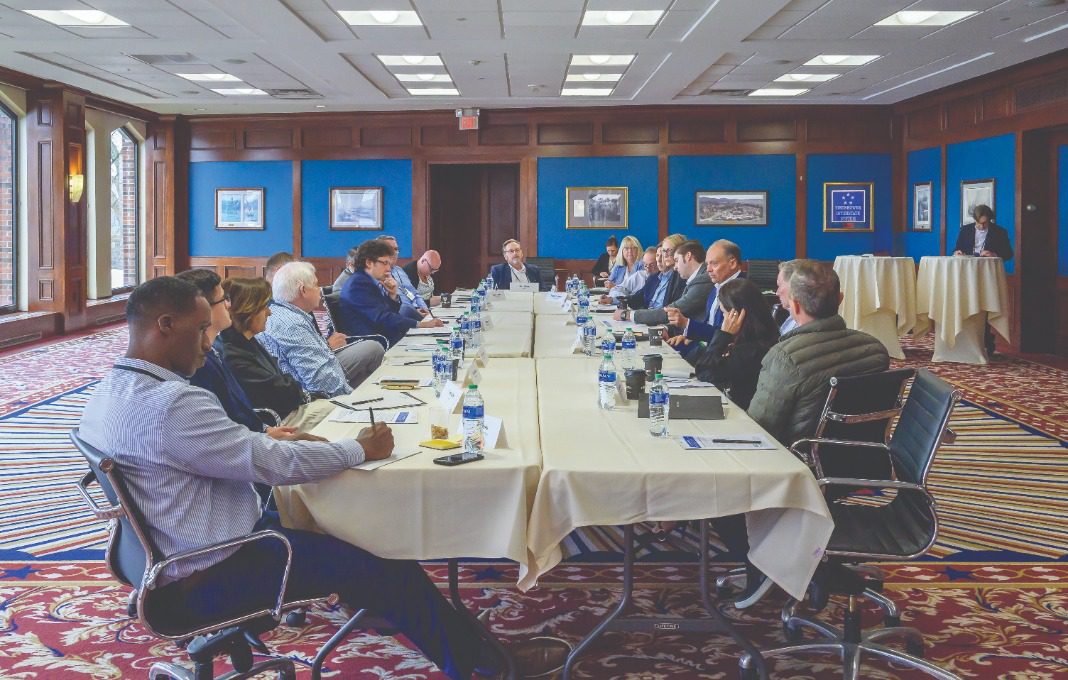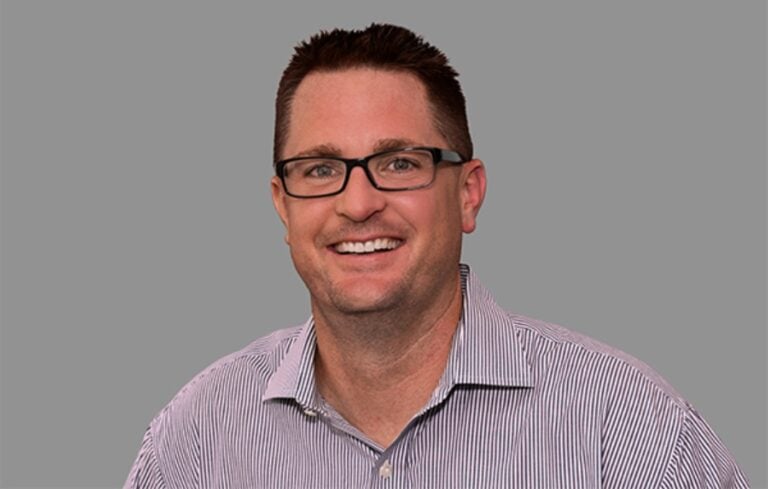


Companies can be forgiven for finding the twists and turns of navigating the talent market over the past few years a tad frustrating. Many found it disconcerting when work-from-home practices necessitated by the pandemic exacerbated a trend toward prioritizing work-life balance, but they adapted. Employers weathered the Great Resignation and the subsequent rash of quiet quitting, adjusted to demands for flexibility with hybrid models and even embraced the concept of purpose as a front-and-center center element of their appeal to prospective employees.
Yet, despite headlines about tech sector layoffs, labor markets remain tight. In industries like manufacturing, recruiting talent continues to be challenging, and hanging onto those hires for any length of time even more so, agreed executives gathered for a Chief Executive roundtable discussion on improving recruitment outcomes held in partnership with the Indiana Economic Development Corporation (IEDC). “Working in a machining shop is not attractive anymore. That’s a big part of what we’re dealing with,” said Amanda Dobson, human resources director at Merritt Aluminum Products, whose company was already struggling to attract younger workers before competing with work-from-home opportunities exacerbated the difficulty.
“Now we’re having to try to convince individuals that you don’t need a desk job to have that work-life balance you crave,” she explained, adding that turnover is also an issue as employees respond to rising prices by job-hopping. “A new shop will open up, and we’ll lose people for a pay difference of 25 cents or a $1 an hour.”
To cope with these myriad issues, employers have sought out innovative ways to improve recruitment outcomes, said Tony Denhart, executive vice president of workforce and talent for the IEDC. “The companies we’re seeing have success are being very strategic,” he said, noting that effective approaches vary widely by size and industry. “There is no one silver bullet.”
The roundtable discussion surfaced eight tactics CEOs have found effective:
Several CEOs lamented the need to compete with larger, well-known companies that attract employees purely through brand recognition, even when the role itself is unappealing. “We just don’t carry the same swagger as a company like Amazon,” said Robert Gjerde, CEO of ACT Fulfillment. “[The job] is to stand at a desk, put a shirt in a bag and close it, but people get to say they’re Amazon employees. So they’re getting people with the branding.”
However, smaller companies can take steps to make their brands loom large in a local job market, noted Dobson, who accomplishes that through community outreach in high schools. “I go in to help students practice interviewing for a job or put together a résumé,” she explained. “I’ll say, ‘Hey, I work at Merritt Aluminum Products, and I’m here to help you apply for a job,’ That’s part of our employer branding. We don’t need to be GE; we just need to be recognized.”
Participating in programs that introduce high school and college students to careers in manufacturing has been an effective recruiting tool for many companies, said Denhart. “A micro internship program where you hire high school or university students for 10- to 30-hour assignments is a great way to bring awareness of your company and your brand to young people,” he said.
Internships can also help companies find talent for hard-to-fill roles, said Greg Woods, CEO of AstroNova, whose company has struggled to build a sales team. “We’ve started identifying college students majoring in sales and hiring them for the summer of their junior year,” he said. “The hope was that we would get between 20 percent and 30 percent of them to join us. We implemented that program, and it’s been very, very good.”

“Grudging hybrid” is how Ron Stone, president of Hoffman Development, describes the remote work model that his company felt compelled to adopt in order to lure and keep talent after Covid reshaped its workforce practices. While employees are now able to work in the office three days and remotely for two, the CEO’s direct reports are in the office all week. “We took the position that as leaders, you need to be seen, to be visible,” he explained. “I like having an office full of people, it’s good for collaboration, for energy. It wasn’t the most popular decision we ever made but no one left.”
Merritt Aluminum, where working remotely simply isn’t an option, had to get creative about amping up flexibility by introducing a less rigid attendance policy and loosening its performance expectations. “We’re driving toward being more accepting of life outside of work,” said Dobson. “Normally, we try to create a 10 percent corridor for absenteeism to make sure we’re scheduling our work jobs appropriately. We upped that to 20 percent. And I’ve been working with my managers to not manage just based on results but on the behaviors that support getting the results.”
Mitchell Martin created a mentoring program that helps new hires settle in. “In addition to a manager, they get matched with someone who can help them find their way around, get answers to any questions and understand the culture,” said CEO Gene Holtzman. “So it’s not the HR department doing [onboarding], it’s someone in their demographic or a related position who they feel comfortable with. It’s one of the best things we’ve ever done.” The company’s mentors have also been able to collect feedback on ways to improve the transition process.
There isn’t much Dixon Valve and Coupling can do about the fact that the manufacturing distribution sector doesn’t hold a lot of allure for younger employees, acknowledged Derrick Duke, U.S. operations manager. However, the company can—and now does—deliver the instant feedback millennials and GenZers crave. “They want to know what our plan is today and what we’re going to do tomorrow, so we’ve tried to innovate through technology in order to give them those things,” said Duke. “I’m at a point where I can print out wheels and pie graphs to show them how they’ve done any time they walk in and, more important, enable them to go get it themselves. It inherently makes them want to compete with one another and that drives our production as well.” At AstroNova, Woods also boosted the frequency of employee feedback. “We changed from an annual review process to quarterly, but that was too much, so we settled at a midyear review,” he recounted, adding that the change functions as a retention measure. “It’s not exactly a ‘stay interview,’ but we use it to check how people are doing, if they’re getting the support they need, and also to avoid losing people over 25 cents or 50 cents [an hour].”
Inflation has made pay paramount for employees who prioritized work-life balance or workplace amenities just a few years ago, noted Kristin Smith, CHRO at Farmward Cooperative.“We have a lot of employees who aren’t earning enough to really keep up with the cost of groceries,” she said. “In Minnesota, folks who come to us ask, ‘How much are you going to pay me?’ They’re living paycheck-to-paycheck and can barely afford rent. So it’s between us and whoever else can pay them even a buck more.”
At the same time, companies need to balance the advantage of bumping up starting pay to attract talent against the risk of alienating seasoned workers, she added. “We have new people coming in at a higher level who are now too close to people who have been there for decades.”

Merritt Aluminum addresses that by educating its workforce on compensation practices—specifically why certain positions level off in pay regardless of years of experience. “We developed a full compensation philosophy and published it to the entire organization,” Dobson said. “We were fully transparent about what it takes to run the shop on an hourly basis and on why we make the decisions we make. Things like that it’s not that you’re not valuable to us as a shipping specialist, it’s that what you do doesn’t offer as much value as what a welder does. And we developed career pathways that will take someone from shipping specialist to welder—so if you want to weld, here’s your pathway.”
Dixon Valve has a similar approach, said Duke. “We lean heavily on our managers to explain what the career path looks like,” he said. “We’re very transparent with people that if they have not advanced their skill set they’re going to be stuck in this area.”
Free medical clinics, on-site daycare, fitness centers, tuition reimbursement, mental health counseling—the list of additional benefits that can boost a company’s appeal to prospective employees is formidable. The trick, says Denhart, is to figure out which will both resonate with your employee base and be affordable.
At ACT Fulfillment, that turned out to be financial counseling. “When we started an employee assistance hotline our employees could call into, we stumbled on the fact that there was a lot of interest in getting financial questions answered,” Gjerde explained. “We expected to get calls about mental health, but they called to ask, ‘How do I get my kids funds for college?’ or ‘how can I remortgage my home?’ That’s what showed up in surveys as having real retention value for people.”
Several CEOs reported looking for ways to use AI and automation to solve staffing shortages. For example, ACT Fulfillment introduced co-bots able to perform the repetitive inventory picking and sorting tasks shunned by employees. “The 30 people who we had selecting shoes out of aisles are gone now, and all the shoes are kept in mobile bins,” explains Gjerde. “It’s not free, because we spend money on the co-bots, but it’s no longer an ergonomic issue—nobody’s doing any kind of crazy reaching [or lifting].”
Grants are also often available to companies implementing automation initiatives, added Denhart. “We have a program that matches funding for companies investing in automating processes,” he said. “Depending on the state you’re in, there may be programs out there to support your company on that journey.”




0

1:00 - 5:00 pm
Over 70% of Executives Surveyed Agree: Many Strategic Planning Efforts Lack Systematic Approach Tips for Enhancing Your Strategic Planning Process
Executives expressed frustration with their current strategic planning process. Issues include:
Steve Rutan and Denise Harrison have put together an afternoon workshop that will provide the tools you need to address these concerns. They have worked with hundreds of executives to develop a systematic approach that will enable your team to make better decisions during strategic planning. Steve and Denise will walk you through exercises for prioritizing your lists and steps that will reset and reinvigorate your process. This will be a hands-on workshop that will enable you to think about your business as you use the tools that are being presented. If you are ready for a Strategic Planning tune-up, select this workshop in your registration form. The additional fee of $695 will be added to your total.

2:00 - 5:00 pm
Female leaders face the same issues all leaders do, but they often face additional challenges too. In this peer session, we will facilitate a discussion of best practices and how to overcome common barriers to help women leaders be more effective within and outside their organizations.
Limited space available.

10:30 - 5:00 pm
General’s Retreat at Hermitage Golf Course
Sponsored by UBS
General’s Retreat, built in 1986 with architect Gary Roger Baird, has been voted the “Best Golf Course in Nashville” and is a “must play” when visiting the Nashville, Tennessee area. With the beautiful setting along the Cumberland River, golfers of all capabilities will thoroughly enjoy the golf, scenery and hospitality.
The golf outing fee includes transportation to and from the hotel, greens/cart fees, use of practice facilities, and boxed lunch. The bus will leave the hotel at 10:30 am for a noon shotgun start and return to the hotel after the cocktail reception following the completion of the round.